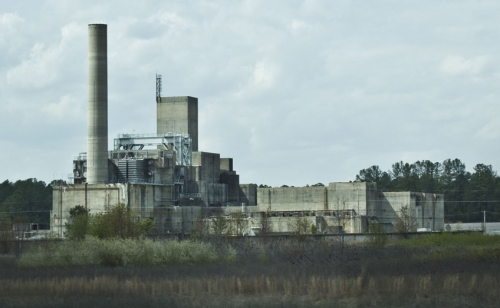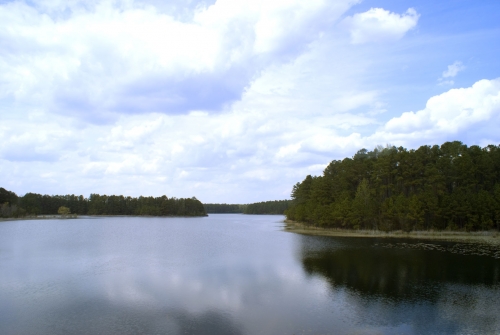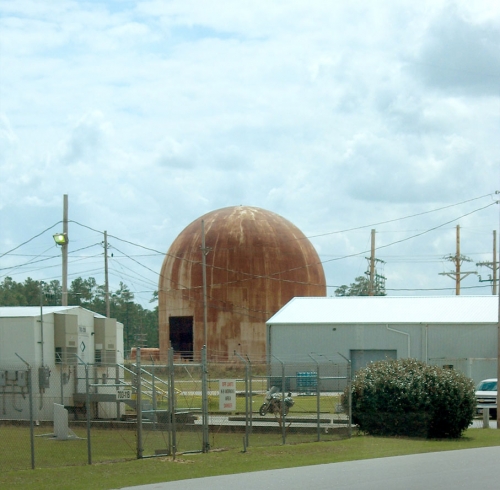Savannah River Site SRS – Aiken, South Carolina
SC
Savannah River Site (SRS) is a nuclear industrial complex operated by the US Department of Energy (DOE). It covers 310 square miles and stretches into parts of Aiken, Barnwell, and Allendale counties; it is bordered on the southwest by the Savannah River, which separates South Carolina from Georgia.
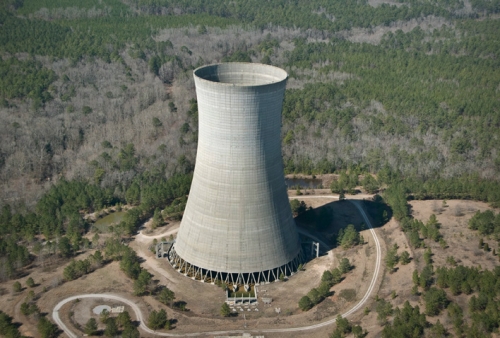
— SRS: Cooling Tower K Reactor —
(This image is copyrighted. You may not use it without written consent.)
Officially requested by President Truman on June 25, 1950, SRS (then called Savannah River Plant) was built in response to growing tension surrounding the Cold War. Officials researched more than 100 sites across the country, but in the end, southwestern South Carolina was deemed most suitable.
Some of the deciding factors included: Size (the area needed to be large enough to house a variety of manufacturing facilities); location (the area needed to be remote and hidden but also relatively close to defense zones in case of attack); a readily available labor force (they'd need people to work there); mild year-round weather conditions and ample water sources (the latter would be used for cooling nuclear reactors used for producing nuclear weapons materials); a stable geology (to help prevent explosions, cracks, and leaks); and inexpensive construction and operating costs (sadly, rural areas are often known for these).
Savannah River Site – Yesterday
The 1950s fear of nuclear devastation ironically led to the destruction of six South Carolina towns. Ellenton, Dunbarton, Meyers Mill, Hawthorne, Robbins, and Leigh were dismantled and wiped off the map by the spring of 1952. (Learn more about SC Lost Places.) 6,000 people were forced to leave, and 1,500 houses were either relocated or destroyed.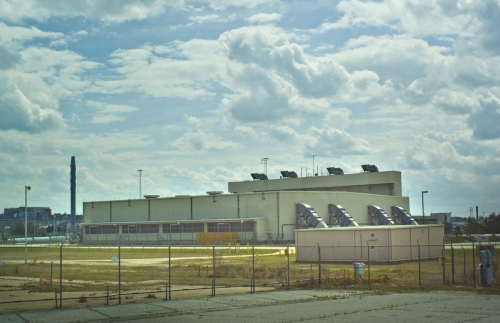
— SRS: S Area Radioactive Waste Storage —
(This image is copyrighted. You may not use it without written consent.)
Other landmarks were also destroyed – including schools, drugstores, businesses, churches, and even cemeteries. (Find out more about the effects of the relocation by watching the film Displaced: The Unexpected Fallout from the Cold War.)
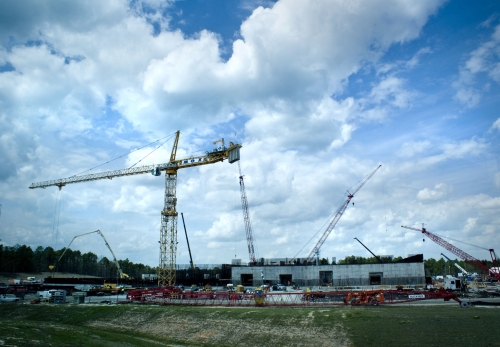
— SRS: MOX Mixed Oxide Fuel F Area —
(This image is copyrighted. You may not use it without written consent.)
Savannah River Site – Today
Today, physical features of SRS include features five nuclear reactors, a cooling tower, two chemical separation plants (called "canyons" because of their long, narrow shape), a Heavy Water Components Test Reactor, a multitude of waste management compounds, and many other buildings, offices, labs, checkpoints, etc.The five reactors no longer operate, although two of the reactor buildings have been refurbished to accommodate new missions. One of the chemical separations plants is now closed, while the other continues to operate. It is the only operational radiochemical separations facility in the United States. A plutonium fuel (MOX) facility is under construction, and SRS processes tritium for nuclear weapons in specialized facilities.
Savannah River Site – Tomorrow
Since the close of the Cold War, SRS has slowly tried to move away from its "Bomb Plant" legacy. For example, the site's hydrogen research facilities have prompted Toyota to send scientists to launch a collaborative effort for alternative car fueling technology.Moving toward new nuclear solutions is a costly and sometimes dangerous endeavor. One major hurdle SRS faces is what to do with all the leftover radioactive waste produced by the plant during its critical years. Given the volatility of these chemicals, the approach taken could have serious consequences for the people of South Carolina and neighboring Georgia.
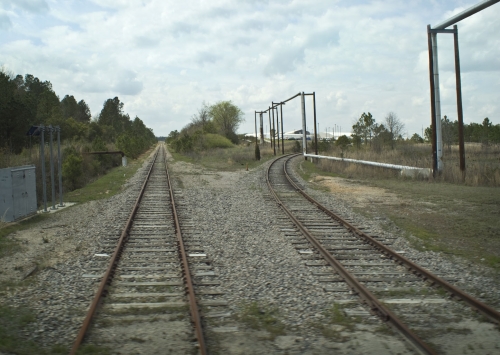
— SRS: Roads and Railroads —
(This image is copyrighted. You may not use it without written consent.)
SRS produced about 36 metric tons of bomb-grade plutonium from 1953 to 1988. (To help put this in perspective, as well as to help convey the depth of nuclear hysteria during the Cold War, only 11 pounds of plutonium are needed to make a bomb.)1 The site currently has about 36 million gallons of high-level liquid waste in 49 active tanks.2 According to DOE, these tanks are aging, 22 of them are noncompliant, and 12 of them have known leaks.3
At present, there are two possible solutions to the problem of nuclear waste at SRS. One option is to store DOE waste in South Carolina and suffer the environmental and health impacts such storage could potentially create. Friends of the Earth, a leading national advocacy group, warns that a leak of this high level liquid waste from aging tanks could damage South Carolina and Georgia's water table. Furthermore, they add that a tank explosion could be devastating and could lead to radioactive contamination over a wide area – similar to the Chernobyl disaster.4
The second option is to ship the waste to another location. Yucca Mountain Repository in Nevada was slated to provide such a solution, but that site sits on a fault line and does not have a license to open from the Nuclear Regulatory Commission. The federal government is now establishing a commission to investigate what should be done with the nation's high-level nuclear waste. Since Nevada has been rejected as a place to store waste, and President Obama has expressed his opinion that "states should not be unfairly burdened with waste from other states,"5 South Carolina appears to be in a tricky situation.
Some have advocated for reprocessing spent fuel that is building up at nuclear reactor sites. This form of recycling, which takes plutonium and turns it into a usable form, seems ideal. Unfortunately, it is a long way off as the US currently has no reactors (called "breeder reactors") to use reprocessed fuel. Furthermore, reprocessing creates additional nuclear waste, which works to negate its advantage.
South Carolina's Senate passed Bill S.232 in May 2009 and failed to pass an amendment which would have endorsed reprocessing, thus helping prevent South Carolina from taking responsibility for other state's commercial waste (e.g., waste produced by power plants). Since SRS is a federal site, not state, we may still be under consideration for accepting commercial spent fuel for storage.
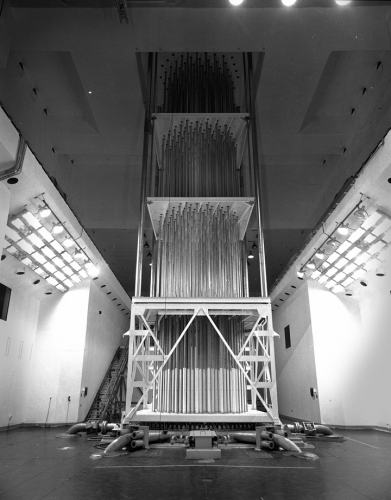
— SRS: R Reactor Process Room —
(This image is copyrighted. You may not use it without written consent.)
In general, opponents say reprocessing is expensive, dangerous, and plagued with problems. They worry that despite the evidence, SRS will continue to take steps in this direction. (In November 2007, the US Congressional Budget Office found that reprocessing costs between $30 and $700 more per kilogram than direct disposal.6 Given that a kilogram is 2.2 pounds, reprocessing the 34 tons – or 68,000 pounds – currently at SRS would be extremely costly.)
DOE has made several presentations highlighting a possible "Energy Park" at SRS. Energy Parks, while not yet firmly outlined, could potentially be incubators of clean energy, such as DOE's proposed solar farm at the Los Alamos National Lab in New Mexico. They could also serve as centers for reprocessing and/or repositories of volatile nuclear waste.
As nuclear issues specialist Tom Clements says, the "fear is that special interests pushing the 'energy park' concept are attempting to bring dangerous and costly nuclear missions to SRS, such as storage of the nation's spent nuclear fuel or reprocessing."
In other words, people are concerned that private contractors and large companies who stand a lot to gain from an influx of federal stimulus funds may encourage SRS to invest in reprocessing even though many consider it unproven and unstable.
This concern may sound extreme, but it is validated by DOE itself. As Terrel Spears of the Department's Savannah River Operations Office explains, "Radioactive waste stored in SRS tanks poses the single greatest environmental risk in the state of South Carolina."
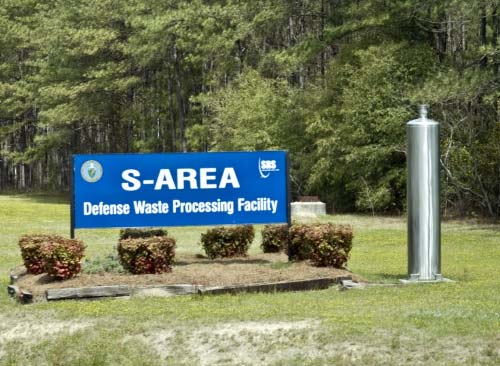
— SRS: Glassification Tank —
(This image is copyrighted. You may not use it without written consent.)
Charleston Hotels
Columbia Hotels
Greenville Hotels
Myrtle Beach Hotels
Charleston Real Estate
Columbia Real Estate
Greenville Real Estate
Myrtle Beach Real Estate
Charleston Jobs
Columbia Jobs
Greenville Jobs
Myrtle Beach Jobs
SC Arts & Entertainment
SC Businesses
SC Calendar of Events
SC Churches
SC Cities, Towns
SC Colleges, Universities
SC Consumer Help Desk
SC Counties
SC Education
SC Elections
SC Facts & Firsts
SC Genealogy
SC Gifts
SC Government, Politics
SC Health, Medicine
SC History
SC Hotels
SC Jobs
SC Libraries, Museums
SC Maps
SC Movies
SC News
SC Organizations
SC Photo Gallery
SC Plantations
SC Pronunciations
SC Real Estate
SC Restaurants
SC Schools
SC Sports, Recreation
SC Tax Guide
SC Tides
SC Tourism
SC Vacation Rentals
SC Web Cams
SC Weddings





